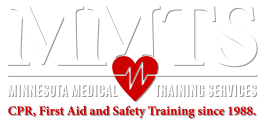As you hopefully already know, you can’t believe everything you see in the movies. This tends to be especially true when it comes health and the human body. For example, when you see a character injecting something into someone’s heart to save their life, that’s pure fiction.
It’s almost always bad practice to stab something into a heart.
Speaking of the heart, there’s a particular practice that movies and shows get wrong time and again: CPR.
How the Movies Show It
CPR (or at least, a physical action that’s referred to as CPR) is often used as the last ditch effort to bring someone back to life in the climax of a movie or show. The victim has drowned or been electrocuted or flung through the air from an explosion. Enter our hero who initially scoops their fallen friend into their arms, weeping and mumbling “no” over and over again.
Finally, their face turns from sadness to focused intensity. They inform the victim that they’re not going to die today and begin punching the person in the chest. This is occasionally interrupted by them sticking an ear to the person’s face, and then giving them mouth to mouth.
Thirty seconds to a minute later, and the nearly-departed’s eyes shoot open as they gasp for air. Their alive. It’s a miracle!
Only, that’s not exactly how it works.
What They Get Wrong
Most everything in the above scene is incorrect, not just in order of how things are done or the actions being performed, but the very purpose of CPR.
When someone experiences cardiac arrest (the misfiring or complete stopping of heartbeats), CPR probably isn’t going to get their heart magically beating correctly again. What it can do is keep it pumping blood into the body until medical help arrives.
As long as you’re doing it right.
CPR shouldn’t involve chest punching or rapid fire presses. It’s supposed to mimic the normal pumping of the heart, which is around 100 beats per minute. If you know the song “Stayin’ Alive”, it’s roughly the same tempo.
Of course, you shouldn’t start CPR until you’ve reached out for professional medical help, titled the victim’s head back, and ensured that nothing is blocking their airway.
Now, if the person in trouble is a near-drowning victim, CPR with chest compressions and mouth-to-mouth very well might bring them back from the jaws of death. But it’s much less than romantic than what you see on the screen. Trust us.
The Truth About CPR
The truth is that CPR can indeed save lives, just not always in the dramatic fashion that actors show. In order for CPR to be truly effective, it needs to be done correctly. CPR certification is simpler than you might think. Get your training today!
For CPR and BLS certification MN residents can check out our available classes by clicking here. Otherwise, you can contact us directly, and we can schedule a time to come directly to you.

